There is no “perfect diet” that’s right for everyone. There just isn’t - so deal with it!
But I can give you some information that will help you understand some of the different ways of eating that are out there.
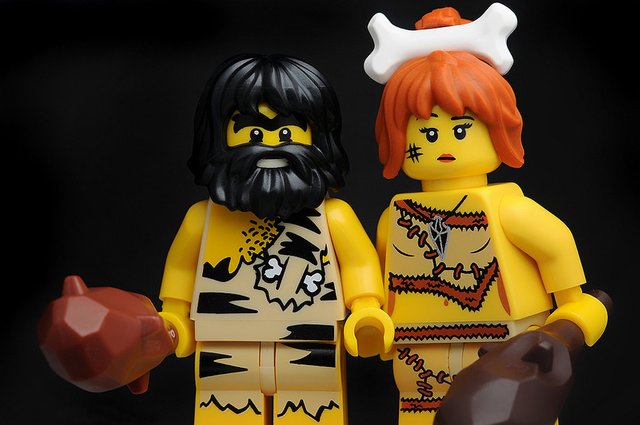
You’re probably all familiar with a bell curve, and human characteristics tend to fit the curve. In terms of food, that means that we all have different biochemistries and different dietary needs.
This is a chart I created to explain the range of diets from Vegetarian or Vegan as examples at one end to Atkins or No Plant as examples near the other. You can see that they all have their place, but some of them are only suited to a very small number of people.
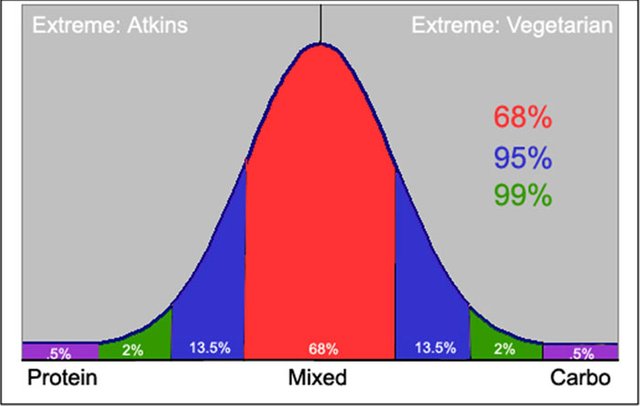
To me, as a nutrition consultant, getting your diet right has (at least) two different aspects to take into account:
• Which are the FOODS that work for me?
• What is the right RATIO or balance of protein, fats and carbs for me?
Here on Steemit, as a paleo-trail curator, I’m looking for posts about ways of eating (and living) that are healing. They might not necessarily be strictly Paleo, but this post will show how they all interact.
WAPF (Weston A Price)
The bottom line for all of this is Real Food, which you’ve probably already noticed me going on about endlessly. My touchstone for whether a food is Real or not is based on the guidelines of Weston A Price, who travelled the world studying ancestral nutrition. You can read my more detailed post about what he found here but the chart below summarises it.
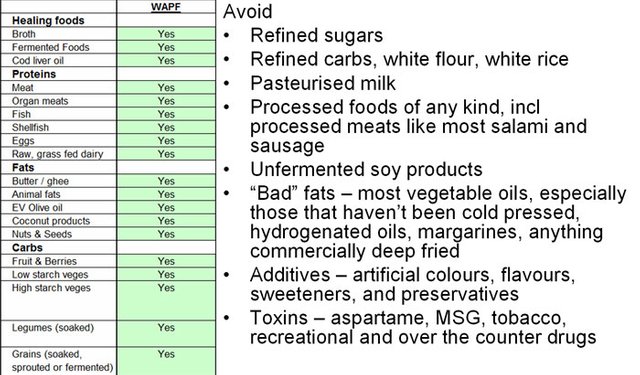
You will notice that as well as protein, fat and carb, there is a special category for what I call the Healing Foods. Generally, people who are chronically ill need to repair their digestive system, and these food help do that.
You will also notice that all types of natural foods are “allowed” though some of them need special preparation. (More about that another time.) But anything manmade, using industrial processes, is not recommended.
Paleo / Primal
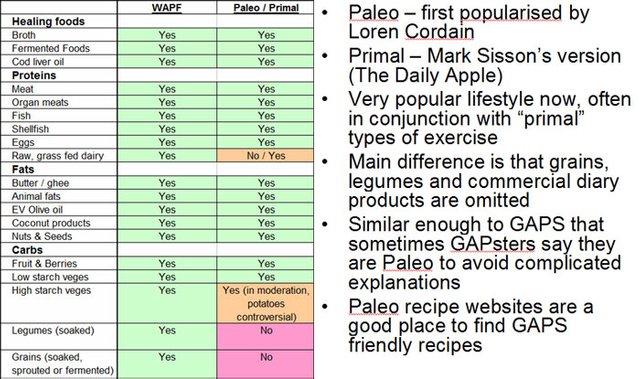
You can see that now some foods have been excluded. This is because they were not eaten a lot by our ancestors until the start of agriculture, when people settled in one spot. Many believe that mankind has not yet fully adapted to these new foods. Though metabolic typing theories maintain that some have, which is why some people do fine on grains and legumes.
Unfortunately, our modern diet includes a LOT of grains, which the majority of people are not so well suited to.
The comments about GAPS are because these charts come from a slideshow that I use to teach people about GAPS, and that’s what we’re moving to now.
You can read my more detailed post about Paleo foods here.
GAPS (Gut & Psychology Syndrome)
This is a therapeutic diet that aims to heal physical and mental disorders by repairing the digestive system.
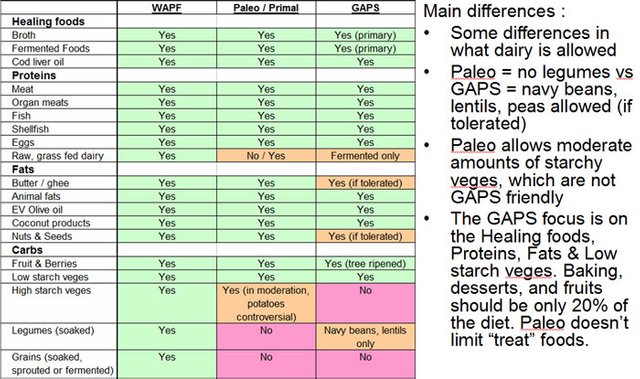
You can see that GAPS is similar to Paleo, but with some differences. Read my more detailed post about GAPS here.
AIP (Autoimmune Paleo)
This is a stricter form of Paleo that eliminates some of the common allergens as well. It was devised by Sarah Ballentyne, author of The Paleo Approach.
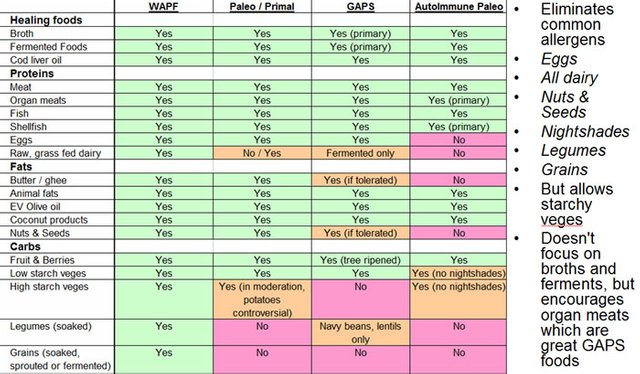
This more restrictive than most people need, but @sift666 follows this way of eating, so I will write about it, or post recipes, from time to time.
Zero Carb aka No Plant GAPS
The byline of this diet is “Eat Meat, Drink Water” though most of them allow any animal food.
Some people do this as a temporary healing regime, if they can’t tolerate any plant foods. Though I know of people who have done it for years and are still doing well on it.
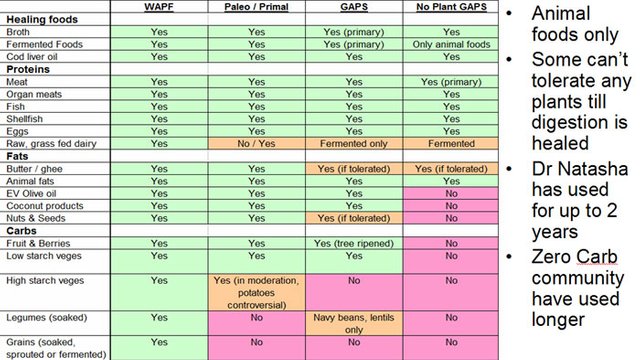
This WOE (way of eating) is at one extreme of our bell curve.
Going back the other way on the curve
There’s no chart for these, sorry, but if we went in the other direction, we would start with WAPF and gradually decrease animal foods till we got to completely animal free, or vegan. In the intermediate stages, some vegetarians eat eggs or dairy, and some eat fish.
I am personally not a fan of WOE’s devoid of animal foods, as Weston Price found that there were no vegetarian traditional cultures, and that they all valued the animal foods very highly. There are some nutrients that are virtually impossible to get from plant foods, like vitamin B12 and vitamin A (contrary to popular belief, there is none in carrots, only precursors).
But some people do fine on a plant based diet. And there is a place for using them for a temporary cleanse.
Other WOEs
There are of course many other good therapeutic diets, which I haven’t touched upon here. But you now have a template for seeing where your chosen plan fits in.
It’s also good to bear in mind that everybody has their own best foods, but also worst foods. So you may also need to eliminate, at least for a while, some other specific type of food, such as: gluten, dairy, nightshades, oxalates or salicylates. Read my post about salicylates here.
We’ve covered the types of food. Now let’s look at the RATIOS.
Here we’re talking about protein, fat and carbohydrate. Since most people will be in the middle of the bell curve, the majority of us need some sort of balance of the nutrients. A few years back, one common eating plan was the Zone diet, which maintained we would all be in the zone if we ate 30% of our calories from protein, 30% from fat and 40% from carbs.
That’s not a bad ratio for a lot of people, and is way more balanced that is often eaten in Western countries. Metabolic Typing theory talks about Protein types vs Carbo types (or Mixed). Carbo types generally do ok by just switching to real foods, as they can tolerate, in fact need, higher levels of carbs.
But protein types do very badly on the generally accepted food pyramid, and even on Zone ratios.
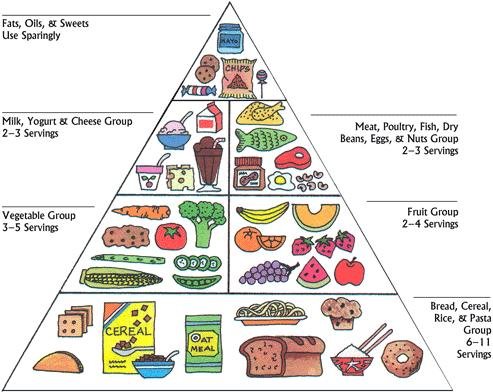
As a rough rule of thumb, people following vegetarian diets will be eating higher carb, people following WAPF might be Mixed, and people eating more of a Paleo diet will be higher in fat and protein.
But it doesn’t always work out that way, so it is helpful to focus on the higher fat and protein diets a bit more. (But I’m not going to focus on high carb in this post as it’s not very compatible with Paleo or similar diets.)
Low Carb diets
High protein diets are often low in carbs, but also lowish in fats. This isn’t always a good idea, as the nutrients in fats (especially vitamin A from animal fats) are needed to properly metabolise protein. Also protein can be converted in the liver to carbs. So without adequate fats, high protein can be stressful on our organs. If you want to go high protein, low carb, make sure your fat isn’t also low.
You might think that if you go to the far end of our first spectrum and eat all animal foods, you will be high fat. But not necessarily. You could be just high protein. Even on Zero Carb you need to make a special effort to be high fat.
High Fat diets
In general high fat diets are more therapeutic, and sustainable. A general term for this is LCHF, meaning Low Carb, High (or healthy) Fat. Usually someone following a LCHF will also be paleo, but not necessarily. That is why paleo-trail sometimes features recipes that contain high fat diary, which are LCHF but not strict paleo.
For more on paleo vs LCHF, and why high fat is beneficial, see this post by @triddin. Also see his posts on using LCHF to manage his diabetes.
Keto or ketogenic takes this a step further, to make sure that you are in ketosis and burning your own body fat.
See this video by @cristi on how to get into ketosis.
EDIT - also check out this article: https://steemit.com/lchf/@krazdang/low-carb-lifestyles-comparison-ketogenics-paleo-and-whole30
For more posts on paleo, LCHF or other Real Food diets, check out the #paleo tag, and follow paleo-trail.
Thanks for reading
Follow me for more health, nutrition, food, lifestyle and recipe posts.
Charts are by me and I believe the food pyramid is the 1992 USDA one.
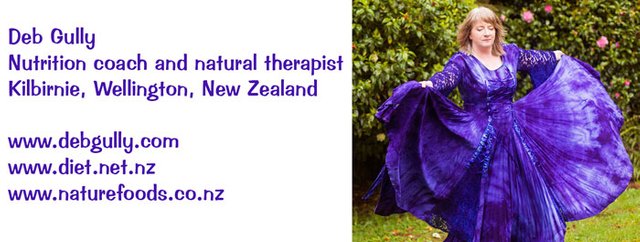
[I offer one on one nutritional coaching or EFT (Emotional Freedom Technique) sessions by Skype. Bitcoin, Steem or Paypal accepted. Contact me in Discord or SteemitChat.
Some of my previous posts:
NUTRITION:
• The wide variety of healthy diets out and what they have in common
• The travels of Weston A Price and his discoveries about healthy diets
• Good fats vs bad fats
• DNA testing for better Health & Fitness
• DNA testing part 2: How Well Do I Digest Carbs?
• DNA testing Part 3: I can’t eat Carbs & How to Manage that
• About the Gut & Psychology syndrome (GAPS) diet Part 1 – Can it help autism?
• GAPS diet Part 2: Foods we can’t have
• GAPS diet Part 3: Foods we CAN have
• GAPS diet Part 4: What if I can’t eat some animal foods
• Salicylate intolerances
• Introduction to the Paleo diet
• How to get started on a Real Food diet Part 1
• Why use Real Food diets for healing
• How to get started on a Real Food diet Part 2
RECIPES AND KITCHEN TIPS:
• Choc Blackcurrant Smoothie
• Paleo Cottage Pie
• Feijoa Pear Smoothie
• Grain free, dairy free Pumpkin & Cashew Bread
• Tip for storing ginger & tumeric
• Grain Free Banana Cashew muffins
• Warming winter soup
• Breakfast ideas
• Healthy Chocolate & Fudge
• Jerky with vegetables
• Choco-mallow protein bars
• Equipment for the real food kitchen
• Carrot Almond bread
• Grain free Fruit & Nut bar
• Vegetable muffins
• Finger food for a gathering
• Real food ideas for snacks and road trips
• Grain free cheese muffins
• Best ever (and easiest) Christmas cake
• Orange Cranberry Xmas Breakfast Muffins
• Festive smoothies for Xmas morning
• Crisp & crunchy Xmas cheese stars
• Xmas menu ideas
• Planning your holiday eating to be a bit more balanced
• For MORE RECIPES and my 15 step Whole Food cooking course, see my recipe website.


Congratulations! Your post has been nominated by the Paleo-Trail discussion group to the Steemtrail voting group. They will be considering your post for their group vote.
Thanks for using the #paleo tag and please join us for discussion and lots of great information, stories and support.
(Voted and resteemed)
Very useful information, writing a good friend
thanks for reading
@kiwideb I like the way you title it and I couldn't agree more. There isn't any that is perfect indeed. We could though choose what to eat and it's allowed to eat healthy or not healthy.
Good points, what's good food to me could be bad for you. So, I try to put disclaimers on many of my recipe and gardening posts cause I'm aware that - like for my Ayurvedic recipes - they have ginger most of the time - so do my smoothies - its' really good but if one is already suffering from ulcer - its' not advisable to take it till they heal for year. We should listen to our body. Our body normally reacts when its fed wrong food - but the many just thought - these is no such thing as food allergy crap , guess what - there's a lot and many more are being discovered. These days, the food industry is just hard to trust. I wasn't shocked with the NOs on the chart.
I don't eat raw stuff unless they are certified organic. Even if they are organic I make sure I washed them - cause of chem trails. Not going to elaborate on that. What I admire the most when I see your posts is your continuous posting about it. Thank you, I'm getting more informed. I sometimes miss coming on your page cause I try to find newbies - but when I find time like now - also read old posts - often times offline. I don't necessarily agree on all of it but they're really informative posts.
Thanks Ivy. The great thing about being here is that we can read lots of great information, and then choose what we want to take on, leave behind, or have an in depth discussion about. There are several food writers here that have quite different diets from mine, but I absolutely respect that its right for them and many others.
@kiwideb yes, just live and let live indeed
and even though we are all different all I know is I get to always pick up something new from all of you :)
Your posts are always informative @kiwideb and I enjoy reading them. A question..Why would one 'avoid pasteurized milk' ?
The short answer is that pasteurising kills off all the beneficial enzymes, including the ones that help digest lactose, and help absorb calcium. Dairy is a big topic, that I will post more about another day :-) I saw your Charlie Chaplin post and have it open to hopefully play the clips later this evening. Something to look forward to.
But it is not a 'negative' food though... merely fairly useless {smile}
Some more info here.
Sorry about the font colour - just doing some changes to the site
http://www.frot.co.nz/design/real-milk/all-about-milk/
Site now updated
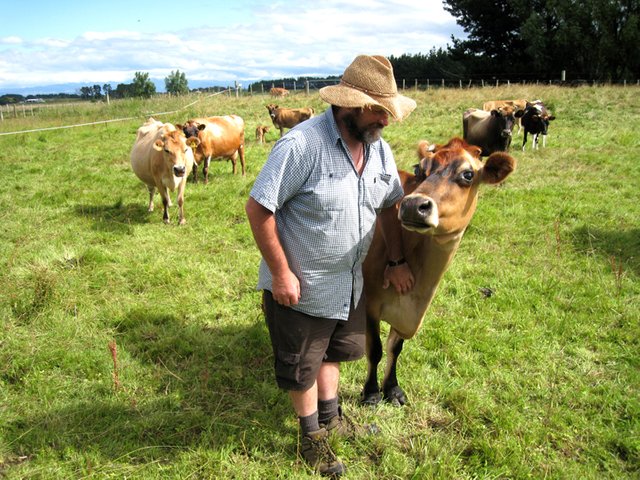
http://www.frot.co.nz/design/real-milk/all-about-milk/
I think that should have read {desperately hoping smile}?
{screws up face and makes nondescript sort of noise that someone makes when they want to give the answer you're hoping for, but really can't}
No, it really is a ruined food. Some people get away with it but a lot of people have very bad reactions. The good news is that if you ferment it, or buy fermented such as yoghurt, kefir or cheese, that will be a lot more digestible.
My webpage on milk is very long, but I think I'll break it down into sections and start posting it. Tonight hopefully.
Thanks @kiwideb... I am very fortunate as I have zero allergies and can eat and drink anything, so do not fuss about things. As I said before I enjoy milk but cannot get whole milk here in the city.
You are very lucky. In that case, enjoy and don't stress!
Oh, I've just seen @sift666 has pointed you to a copy of my article on his site. Nevertheless, if you're wondering, so are others, so I will put that on the priority list.
Great post. Very valid and I agree everyone needs to find what works for them. Many people however do not even try to find out which is unfortunate. Guessing rarely works. It is a trial and error scenario and it takes time, awareness and intent to measure the effects of food on your body. I think people need to be a little more mindful about what they put in their body and I think we can all agree that it is a self respect, education and awareness issue. Keep up the great work sharing your message.
You are so right! And it doesn't stay the same over years. So that awareness does need to be ongoing.
Finally added a link to this in my post over here. Sorry it took so long <3